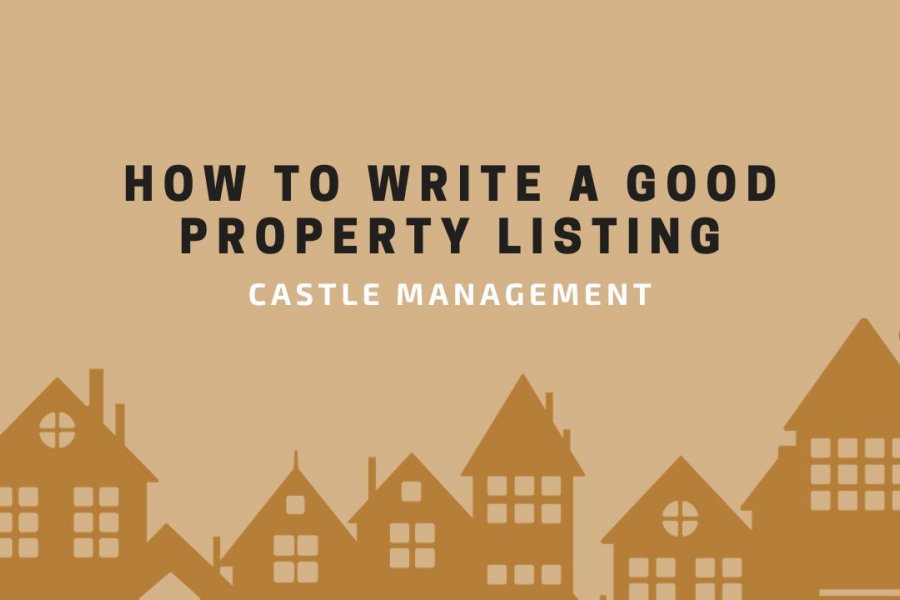
To be a successful rental property owner, you need to know how to make a well-crafted property listing so your units will stand out and attract new tenants. When you’re marketing your property, the challenge lies not just in showcasing the property's features, but also in capturing its unique charm and its potential to be a new home for prospective renters.
By following a structured approach when you create a listing, you can maximize the appeal of your rental properties, ensuring that you get a lot of interest from new renters so you can find the best fit for your property. Keep reading to learn some tips to keep in mind when writing your next property listing.
9 Tips for Writing an Effective Property Listing
1. Write a Persuasive Opening Statement
Your listing's opening statement sets the tone. It should capture and maintain the reader's interest. The opening statement should be specific and engaging, focusing on your property's unique qualities.
This is your chance to set your property apart from the competition and draw in the reader. A persuasive opening statement should be carefully crafted to showcase the most appealing aspects of your property in a way that resonates with your audience.

Key elements to consider:
- Immediate Appeal: Highlight a unique feature, like the property’s location or a recent renovation.
- Emotive Language: Use descriptive words to help your audience visualize themselves living in the property.
- Clarity and Conciseness: Focus on one or two selling points to avoid overloading the reader with too much information.
Example of a good opening statement:
"Experience suburban serenity in this three-bedroom home with a lush backyard and sunlit kitchen."
2. Write a Compelling Headline
The headline should be concise and descriptive and should highlight your property's key features without exaggeration. It acts as the hook that draws them into reading more about your property. An effective headline should be attention-grabbing, concise, and informative, providing a snapshot of what makes your property unique.
Key aspects to include:
- Brevity and Clarity: Convey the property’s best aspect in a few words.
- Unique Selling Points: Emphasize distinctive features.
- Avoiding Hyperbole: Be enthusiastic but honest about what your property has to offer.
Example of a good headline:
"Charming 3-Bedroom Garden Apartment in a Tranquil Neighborhood"
3. Select the Right Words
Your word choice should paint a vivid, honest picture of the property, focusing on benefits rather than just features. The choice of words in your property description significantly influences how potential tenants perceive your property. It's not just about listing features; it's about painting a picture that appeals to the emotions and aspirations of your audience.

Strategies to consider:
- Descriptive Language: Use vivid adjectives to ensure that readers can visualize the property without seeing it in person yet.
- Honesty: Ensure descriptions accurately reflect the property.
- Benefit Focus: Emphasize how features enhance living.
- Avoid Jargon: Use clear, simple language.
4. Emphasize Unique Features
Lead with standout features, contextualizing them to show how they can enhance the experience of living in that property. Highlighting the unique features of your property, like energy-efficient appliances or a recently renovated bathroom, early in the listing can significantly enhance its appeal to potential tenants. These features set your property apart from others and can be a major deciding factor for renters.
Examples of good descriptions:
"Master bedroom with an en-suite spa-like bathroom provides a daily retreat."
"Energy-efficient kitchen blends sleek design with utility savings."
5. Balance Detail and Brevity
Provide essential information in a concise format, focusing on attractive features and avoiding filler content. Balancing detailed descriptions with concise writing is essential. This approach ensures potential tenants get a clear picture of the property without being overwhelmed by information.
Key elements to consider:
- Vital Details: Mention bedrooms, bathrooms, and any dedicated spaces, like a laundry room or home office.
- Prioritize the Property’s Best Features: Start with the most attractive aspects of the property.
- Bullet Points: These are a great way to quickly and clearly communicate a lot of information to the reader.

6. Avoid Negative Language
Always highlight the positive aspects of the property, reframing any less desirable aspects in a favorable light. For example, a small kitchen can be marketed as "cozy", “intimate”, and “low maintenance”. Your goal is to highlight the property's strengths without misleading potential tenants.
7. Include Incentives
Incentives can serve as a powerful tool to make your property listing stand out and appeal to potential tenants.
Potential incentives:
- Financial: Offer discounts on first month’s rent or reduced deposits.
- Value-Added Services: Include utilities, WiFi, or cable.
- Flexible Terms: Offer different lease options or make the property pet-friendly.
8. Perform Meticulous Proofreading
Ensure your listing is error-free and clear, reflecting professionalism. Have a property management expert review your listing for additional insights and feedback.
Proofreading tips:
- Take a Break: Walking away from your computer for a while can help you come back to the listing with fresh eyes.
- Read Aloud: This is a great way to catch awkward phrases that might not seem obvious on the page.
- Second Opinion: Get feedback from a trusted friend or a property management professional for a different perspective.
9. Close with a Call to Action
End with clear instructions for the next steps, like contacting you for a viewing. A well-crafted call to action (CTA) is essential for converting interest into action. You want to clearly outline the next steps, encourage interested renters to contact you quickly, provide multiple options for reaching out, and be friendly and welcoming with your language.
Conclusion
Creating a compelling property listing is a critical skill for any landlord. By following the outlined steps mentioned above, from creating a persuasive opening statement to including a clear call to action, you can significantly improve the appeal of your rental properties.
Remember, a property listing is more than just a factual description; it's a narrative that connects with potential tenants. Your listing reflects your commitment to providing a valuable rental experience.
With careful attention to detail and a focus on the unique aspects of your property, your listing can stand out in a crowded market, reducing vacancy times and improving your rental property’s success.
If you think you’d prefer to work with professionals, work with the property managers at Castle Management! We know how to write the best property listings that make sure your property stands out among the competition. Get in touch with us today to learn more about what our services can do for you.
